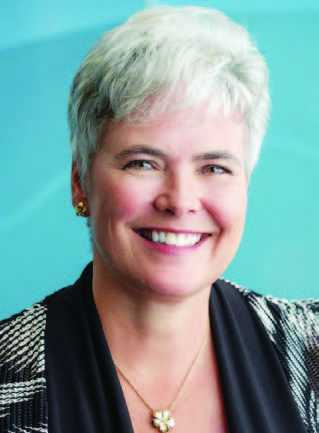Forever changed
 |
| Dr Kathleen Ross |
“I am not afraid; I was born to do this.”
—Joan of Arc
14 April 2020
Many of my communications over these past few weeks have focused on the impressive and cohesive response of our profession to the rising SARS-CoV-2 pandemic. Together, we worked with our partners to ensure we were as ready as we could be to treat the most ill patients as they needed hospitalization and ventilation. The speed with which we mobilized and collaborated across all sectors was unprecedented. Our professional organization led the charge to ensure the most up-to-date information was accessible in the most convenient ways. Grassroots divisions of family practice and medical staff associations banded together to facilitate optimal patient care and physician protection. Truly inspiring work has been done by an untold number of people to pull this all together. Now we wait.
Physical distancing and the provincial health officer’s plea to “just stay home” have certainly made a difference to case numbers to date. At this point, it is still too early to know for sure if our curve is flattening. Added to this, we have patients who need health care outside of COVID-19, and we are successfully rising to this challenge.
A truly critical piece of that success has been the widespread adoption of virtual medicine across medical practices in both primary and consultant care. We have never seen such a rapid and violent shake-up in the way we deliver health care in Canada. Admittedly, the advent of electronic medical records allowing instant search and visualization of data in a patient’s chart was definitely a revolution in care, just not as rapid or as widespread as what we are living through right now.
The majority of our medical training is grounded in honing clinical skills while we see patients in person. Our key triad includes listening to our patients’ concerns, watching them for important clues as they relate their history, and of course the incredible hands-on skills required to ascertain the main differential diagnoses. We are comfortable with our skills and can rely on our clinical judgment based on our visual, auditory, and tactile senses after years of practice and hands-on experiences. We can remember what an incarcerated hernia feels like and what the subtle signs of heart failure sound like. Often what we smell will point us toward the diagnosis, such as an infection or C. difficile colitis. We know when a sick person in our presence is mildly or severely ill, often even before we examine them.
Now enter the world of virtual health. In many ways, it is as if we have lost one or two of our senses. We can obtain the same history and ask the same important questions that often lead us to the differential diagnoses without an in-person exam. That said, hands-on, in-person, face-to-face clinical care is our gold standard.
Times have changed in our virtual-care world. I stare at my patients on tiny screens. My patients stream themselves using cameras and Internet connections of varying quality as they discuss their issues. I feel blunted and perhaps harbor the nagging feeling that my assessment is incomplete. Patients seem to enjoy speaking to their doctors from the comfort of their homes, often with family around them. It feels less intrusive and several have commented that this type of health care is more “fun” than coming to the office.
It is obvious that our health care system, along with many other aspects of our society, will be forever changed. We will refer to medical practice as “pre-COVID-19” and “post-COVID-19” in the years to come. There is no holding back the wave. Health care will need to continue to adapt. We will learn to work with more than one sense impaired and we will learn to know when we need that missing sense to complete an exam. We know there is something uniquely special and healing in the face-to-face encounters with our patients that is not present over Skype. Yet, for now, this is very necessary to slow the community spread of SARS-CoV-2 and keep our patients and ourselves safe. I have every confidence that our profession will continue to meet the virtual care model with the same cohesion with which we have met the rest of this pandemic. We know with certainty that we can do this. We are not afraid of change. We were in fact, born to do this.
—Kathleen Ross, MD
Doctors of BC President

